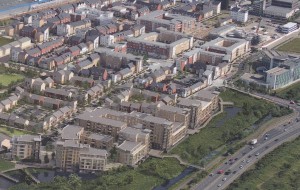In the Independent today an article by Rob Merrick (see here) lays bare the way developers avoid including large numbers of urgently needed social housing units in their developments. As a member of Reading’s Planning Committee I have watched time and again as big developers plead the ‘viability’ option to reduce the amount of social or affordable housing that they include in major development schemes.
The viability test allows developers to put to the council their own assessments to show that if they included any more social housing units they would not make enough profits to make a scheme viable.
I am heartened by the noises coming from the Labour Party that they will seek to end the use of viability tests in planning applications. It is just a pity that here in Reading we are seeing huge numbers of flats being built in our revitalised town centre but we have never challenged developers over their viability figures and allowed them to ride roughshod over the needs of people in our town. We have over 5,000 families on our housing waiting lists but despite the thousands of new flats being granted planning permission only a handful are actually for social rents. The viability figures are never contested in Reading’s Planning Committee despite my pleas to stand up to these bullying developers. We have even had statements from Planning Inspectors describing the housing crisis in our town but we have never, as a council, challenged a developers viability figures in front of a Planning Inspector, however absurd the figures might be.
Even the current Housing Minister, one Alok Sharma MP, agrees that the system is not working but has yet to suggest anything like a solution.
We all know that the viability test is used by developers to avoid building social housing and I challenge the Labour Party in Reading to stand up to these money-grabbing moguls and challenge them to defend their figures in front of an independent Planning Inspector. And let us bring out in to the open their ridiculous attempts to avoid building the homes that Reading desperately needs.


